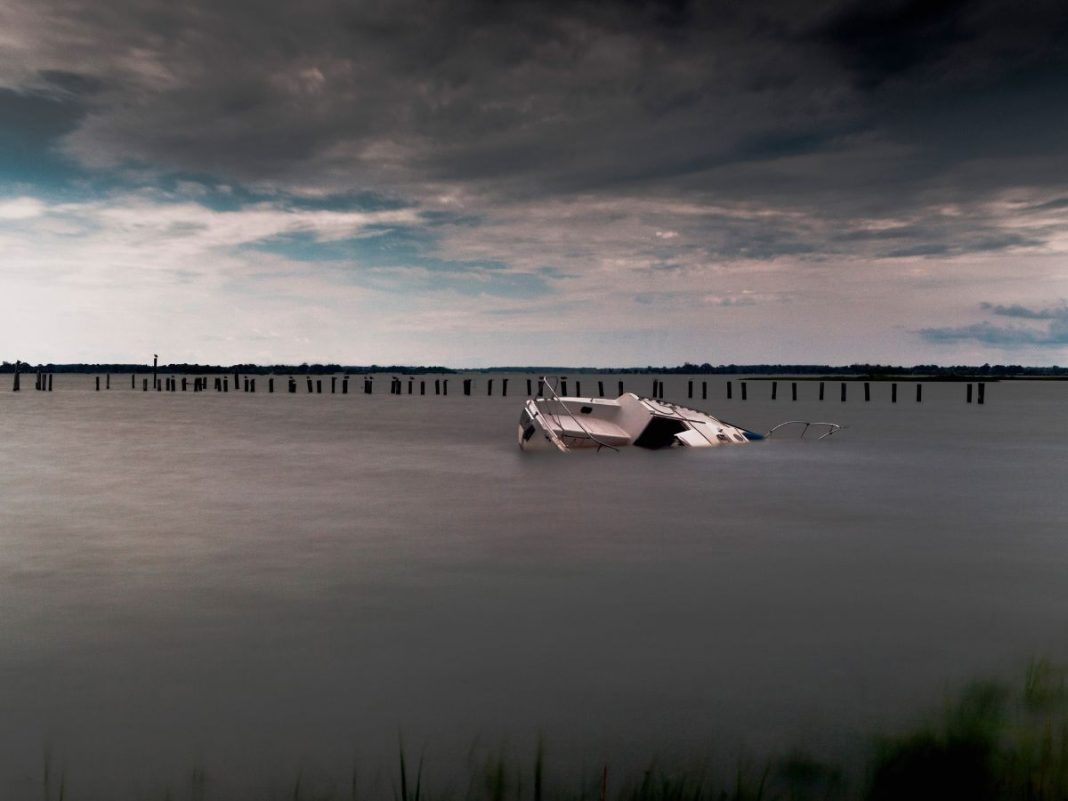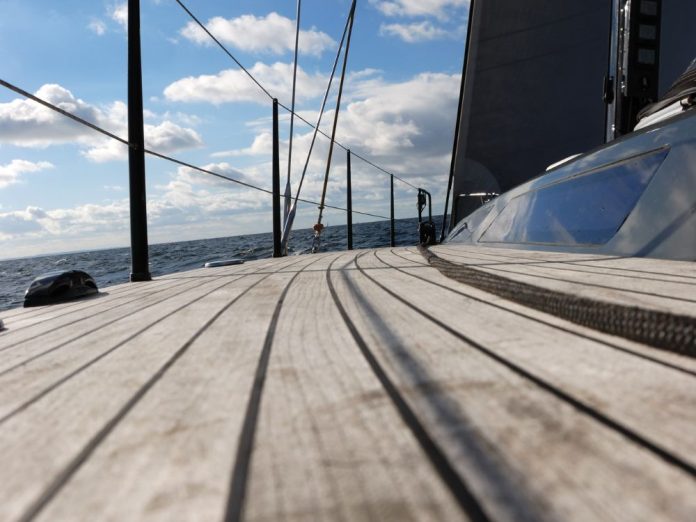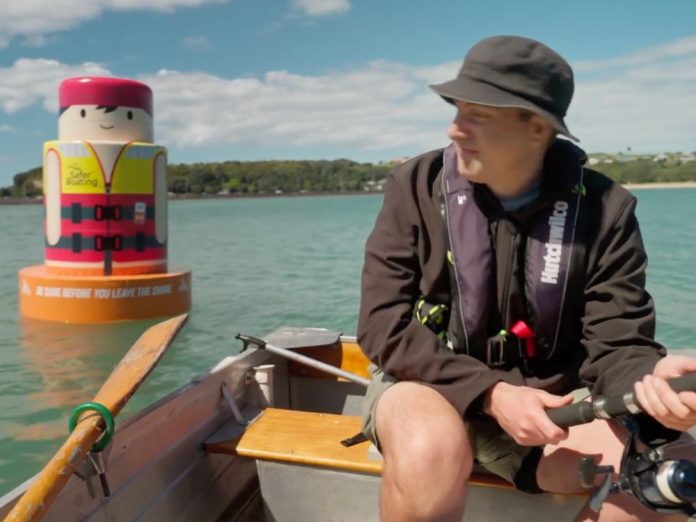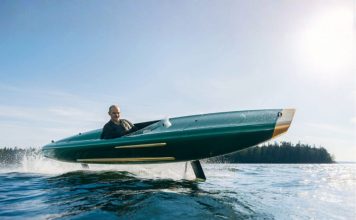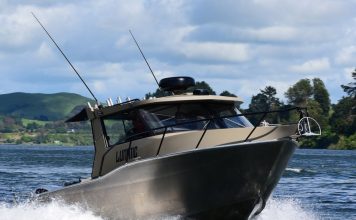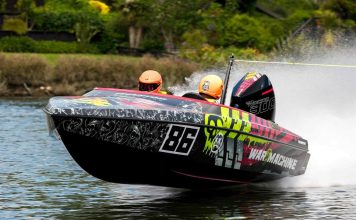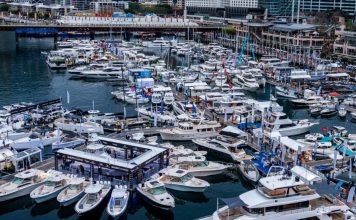Why it matters – a reminder from New Zealand waters
In early 2023, a couple from the Wellington region set off for a routine day of fishing off Cape Palliser. Calm inshore waters gave way to rough seas faster than expected. Within moments, their trailer boat was capsized by a large wave. They found themselves in the water with no way to call for help. Their EPIRB had expired and failed to activate. Their flares were rusted and unresponsive. Their VHF was inaccessible. It wasn’t until a passing trawler noticed them hours later that they were finally rescued.
They survived—but their story could have ended very differently. Their experience is a powerful reminder: safety gear only works if it works when you need it.
True story or not, without the right attention to safety gear, this could happen to you.
As the boating season approaches, now is the perfect time to stop and take stock. A few hours spent inspecting, testing, and replacing your safety equipment could be the most important hours you spend all year.
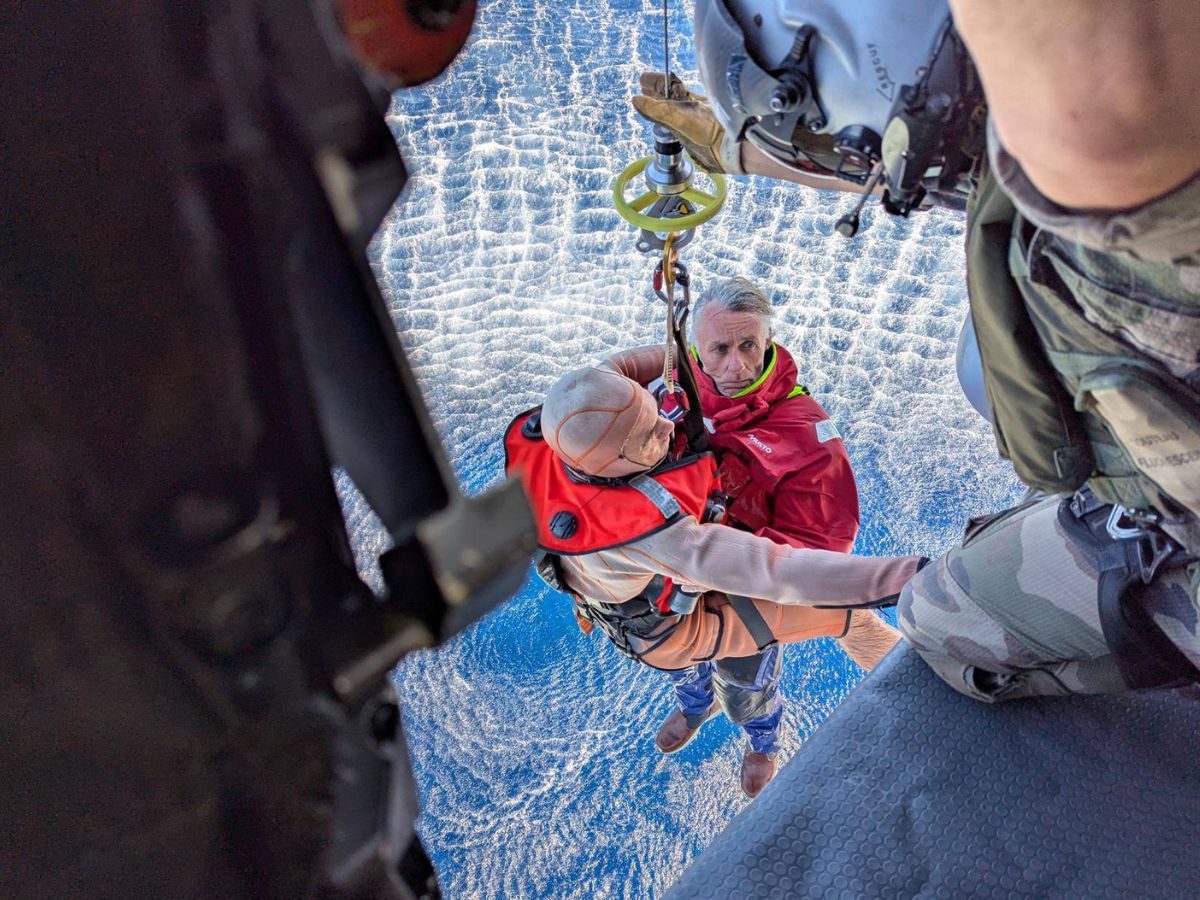
Safety gear doesn’t age like wine
Salt, UV exposure, vibration, humidity, and passing time are all working against your emergency gear – even if you haven’t used it. Lifejackets can lose buoyancy or develop hidden damage. Flares can expire or become unstable. Batteries in EPIRBs and alarms can quietly die. Equipment that looks fine on the outside might already be compromised inside.
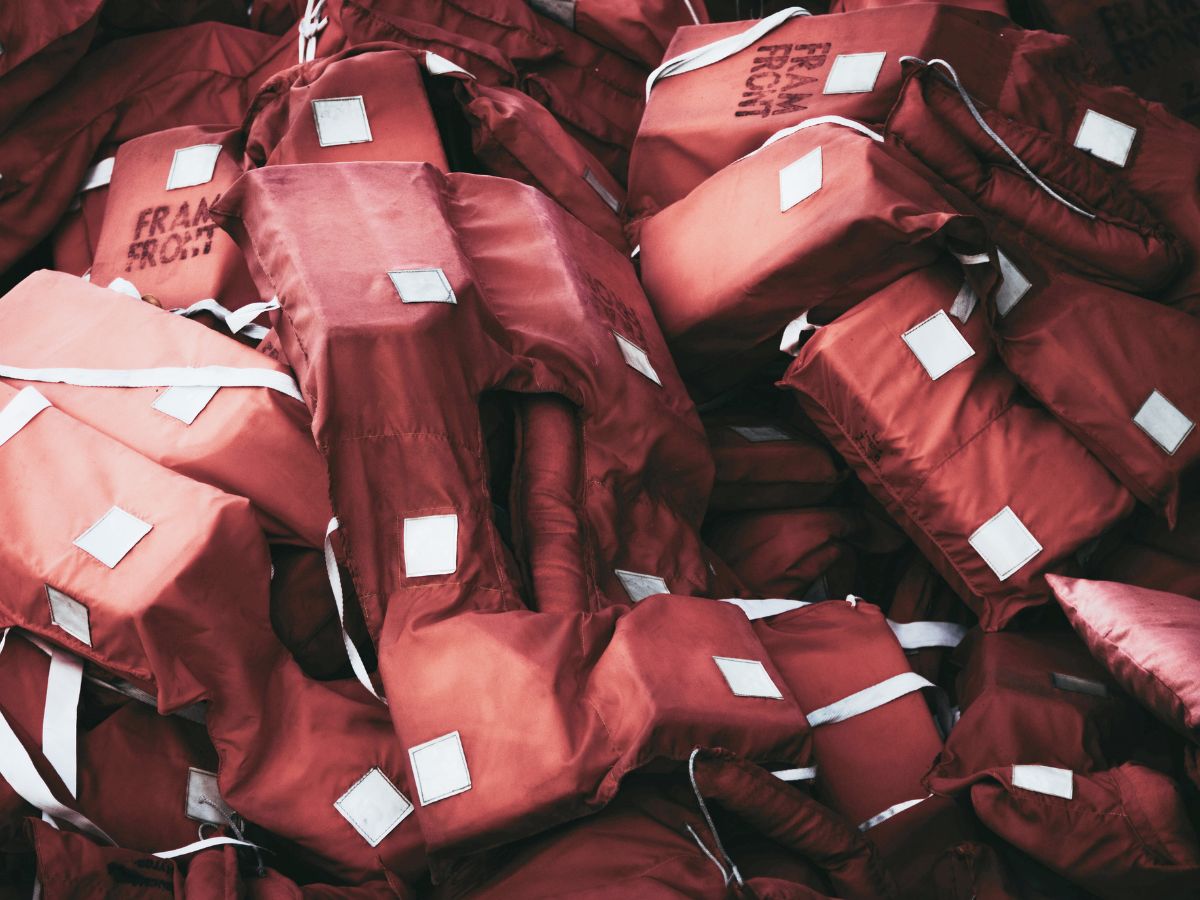
That’s why a pre-season check is more than a recommendation—it’s a responsibility. Go through your kit one item at a time. Don’t just eyeball it. Open it up, test it, and be honest: would I trust this with my life?
Would I trust this with my life?
Let’s break it down.
Flares – expired is dangerous
Flares are still one of the most relied-upon methods of signalling distress at sea, but they also tend to be one of the most neglected items on board.
What to carry
A well-rounded flare kit includes:
- Orange smoke: for daytime use, visible on the water.
- Red handheld flares: effective day and night, especially for nearby aircraft or boats.
- Parachute flares: long-range visibility at night, reaching high altitudes for maximum reach – up to 40 miles in clear conditions. Also suitable for day use with visibility up to 10 miles.
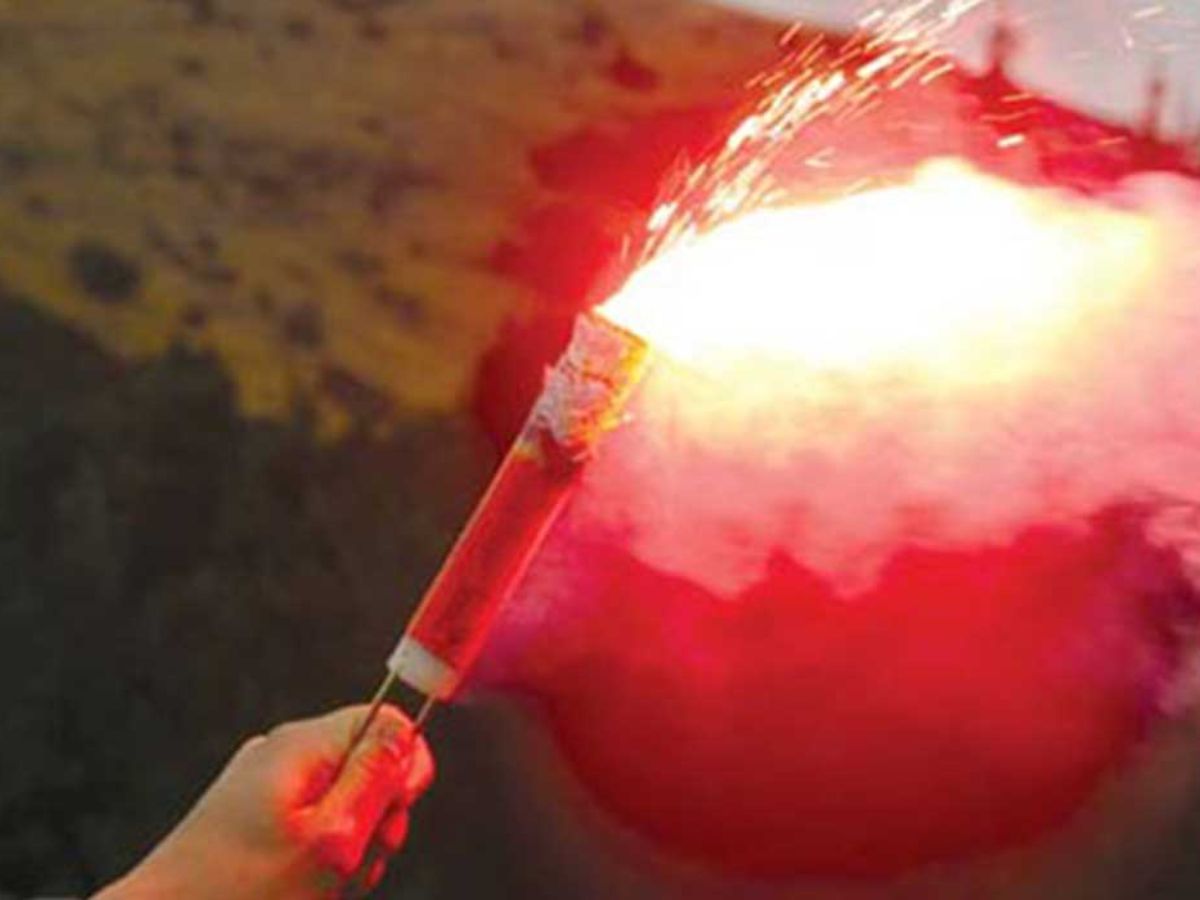
What to check
- Look for the expiry date, which is usually printed directly on the flare body or its packaging. Don’t confuse purchase date with manufacture date – flares typically have a three-year lifespan from the date of manufacture.
- Inspect the physical condition: signs of rust, corrosion, cracked casings, worn labels, or moisture exposure (bubbling paper or mildew) are all red flags.
- Storage matters: flares need to be stored in a dry, waterproof container. Avoid stashing them in damp lockers, under decks, or in places exposed to UV. A sealed flare canister is ideal.
Disposal
- Don’t keep expired flares as backups. They’re unreliable and dangerous.
- Don’t burn, bin, or dump them.
Contact your local marine supplier, regional harbourmaster, or call Police on 105 for advice on safe disposal.
If in doubt, cross-check your flares with Maritime NZ’s list of approved lifesaving appliances.
CHECK OUT BURNSCO’S RANGE OF FLARES.
EPIRBs and PLBs – your beacon to rescue
Emergency Position Indicating Radio Beacons (EPIRBs) and Personal Locator Beacons (PLBs) are among the most critical items aboard any vessel, whether you’re crossing Cook Strait or simply chasing snapper in the Gulf.
When activated, these devices send a distress signal via satellite to RCCNZ (Rescue Coordination Centre New Zealand), including your identity and location. They are your ticket to being found – even if no one sees you go overboard.
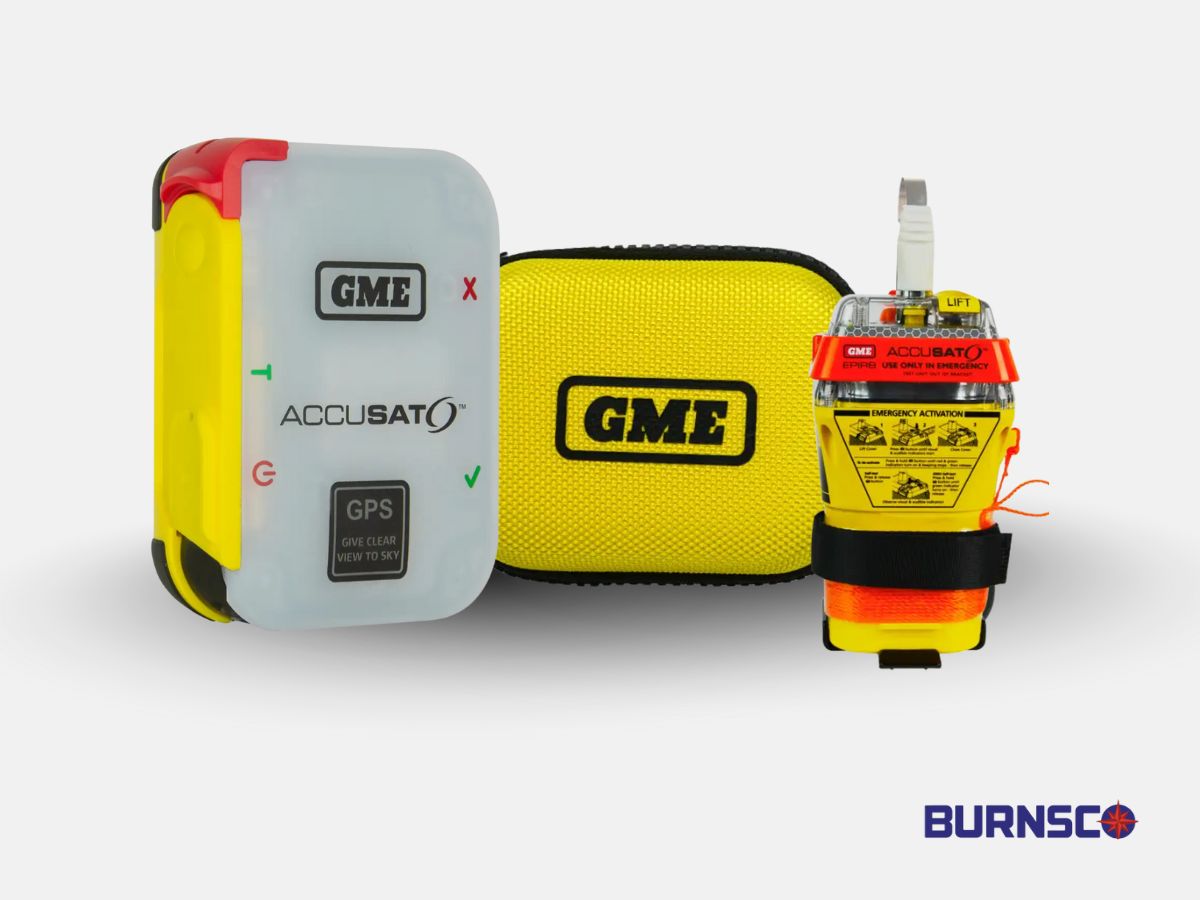
Registration
- Registering your EPIRB or PLB is essential – it lets rescue crews know who you are and provides vital contact details for coordinating a faster response.
- It is the law to to register your beacon. Visit beacons.org.nz to register or update your details. This connects your beacon to your vessel and emergency contacts.
- If your registration is outdated, rescue crews may lose valuable time trying to confirm your identity or location.
- If your device is coded to the NZ Search and Rescue Region, registration is free and handled by RCCNZ.
What to check
- Battery expiry: The label will show the expiry date in month/year format. Most batteries last 5–10 years, but the signal strength drops as they age. We recommend that you replace your EPIRBs and PLBs well before the date approaches.
- Run a self-test: Most EPIRBs have a “T” or test button. Press it and wait for the light or sound signal confirming internal diagnostics are functioning.
- If your PLB has GPS, you can usually run a GPS-specific self-test outdoors, under clear skies. Look for the manufacturer’s instructions on test duration and what the light sequence means.
Upgrade if needed
Some newer units also include AIS signals or Return Link Service (RLS) features—letting you know your distress signal was received.
CHECK OUT BURNSCO’S RANGE OF EPIRBS AND PLBS.
Fire extinguishers – one shot only
Fire on a boat is fast, furious, and often fatal if you don’t have the right extinguisher in working condition.
Choose the right extinguisher
- ABC dry powder: Works on most fires – combustibles, fuel, and electrical.
- Foam (AFFF): Ideal for engine bays – less damaging to electrics and better at smothering flammable liquids.
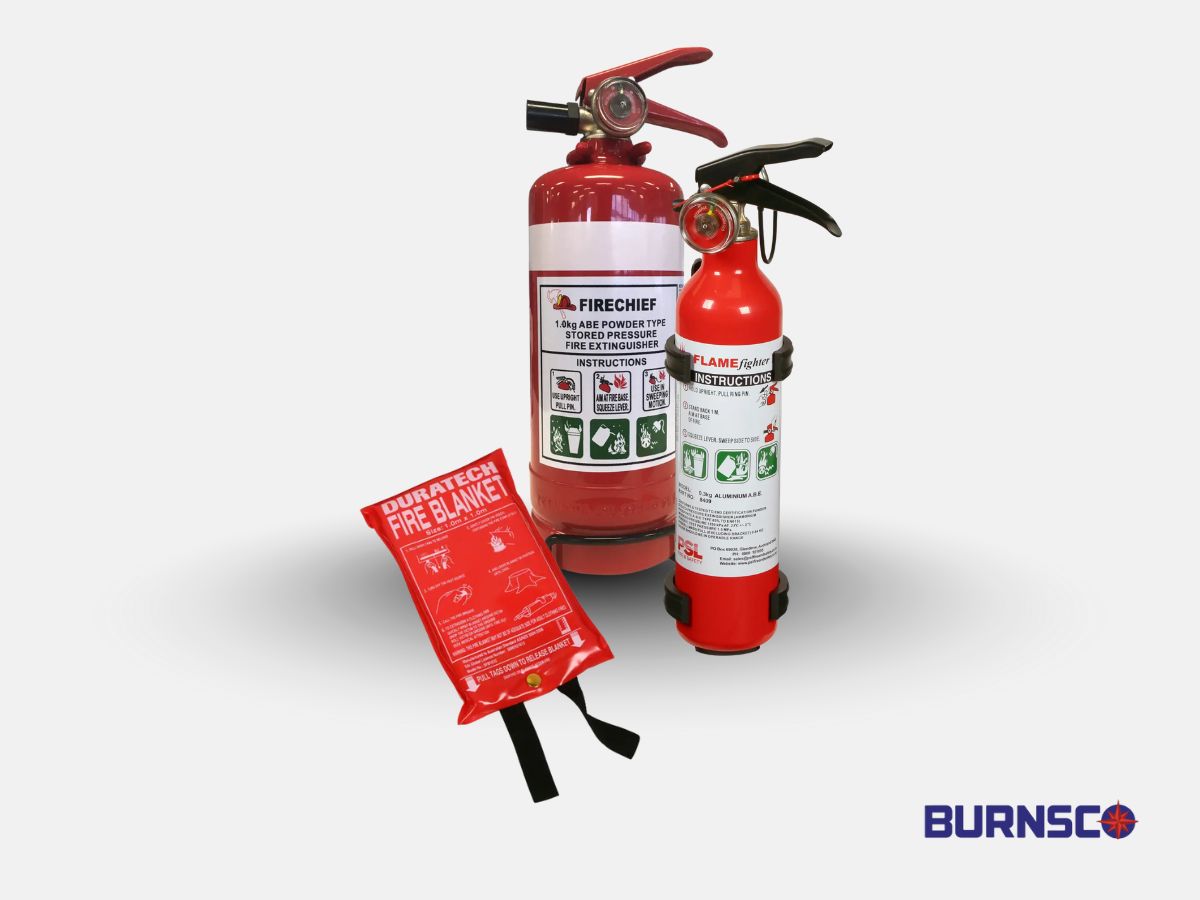
What to check
- Pressure gauge: Ensure the needle is in the green zone. If it’s red or low, the extinguisher may be useless.
- Physical integrity: Check for dents, corrosion, powder leaks, cracked hoses, or missing safety pins.
- Expiry or service date: Most extinguishers last 10–15 years, but regular inspections (every 6–12 months) are essential.
Disposal
Contact your local waste facility or marine dealer. Never throw extinguishers in standard bins—especially if full or containing halon gas.
CHECK OUT BURNSCO’S RANGE OF FIRE EXTINGUISHERS AND ACCESSORIES.
Lifejackets – no good if they fail
A lifejacket is only useful if it keeps your head above water when it counts. Fit, inflation, and condition matter more than ever.
Foam lifejackets
- Check the fabric and foam for tears, crushed sections, mildew, or UV degradation.
- Test the fit: Zip and clip it. Do a shoulder lift test – if it rides above the chin, it’s too loose.
- Inspect the label: Size, weight rating, and approval must still be visible.
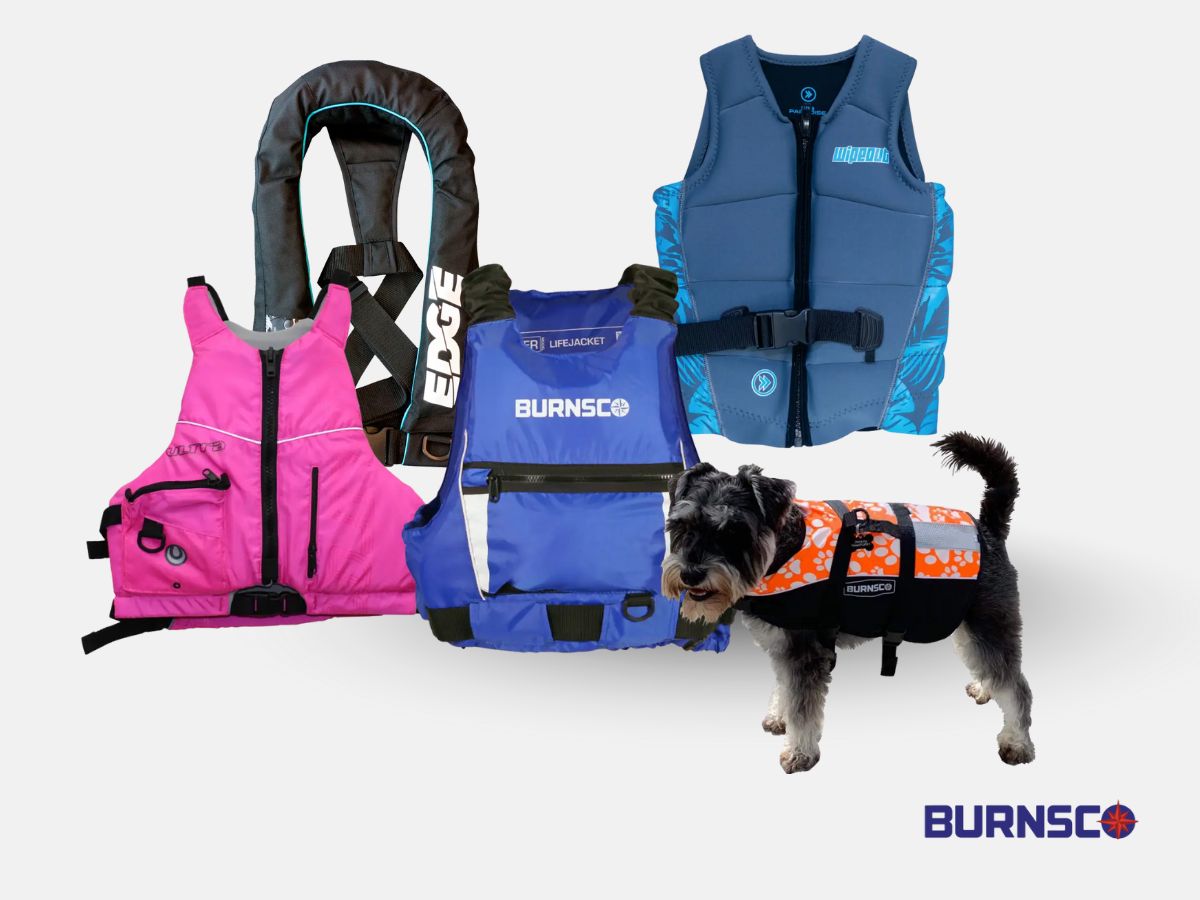
Inflatable lifejackets
- Open the cover and check the air bladder for holes, scuffs, or mildew.
- Manually inflate with the oral tube, leave overnight, and check for leaks or deflation.
- Inspect the CO₂ cylinder: Look for rust or damage, and weigh it against the stamped full weight.
- Check the expiry on the firing mechanism, including the automatic bobbin (often printed MM/YY).
Follow your manufacturer’s instructions for repacking and servicing.
CHECK OUT BURNSCO’S RANGE OF LIFE JACKETS.
Smoke and gas alarms – silent killers need sound alerts
Smoke alarms detect fire early. Gas detectors warn of potentially lethal leaks from LPG, CNG, or carbon monoxide buildup—common on boats with enclosed spaces.
What to check
- Test the alarm using the built-in button. It should emit a loud, continuous tone.
- Replace the batteries annually—start of season is a good rule of thumb.
- Sensor life: Gas detectors often need calibration or sensor head replacement every 5–7 years.
- Check placement:
- Smoke alarms near sleeping areas and galley
- Gas detectors low to the floor (for LPG) or high up (for CO)
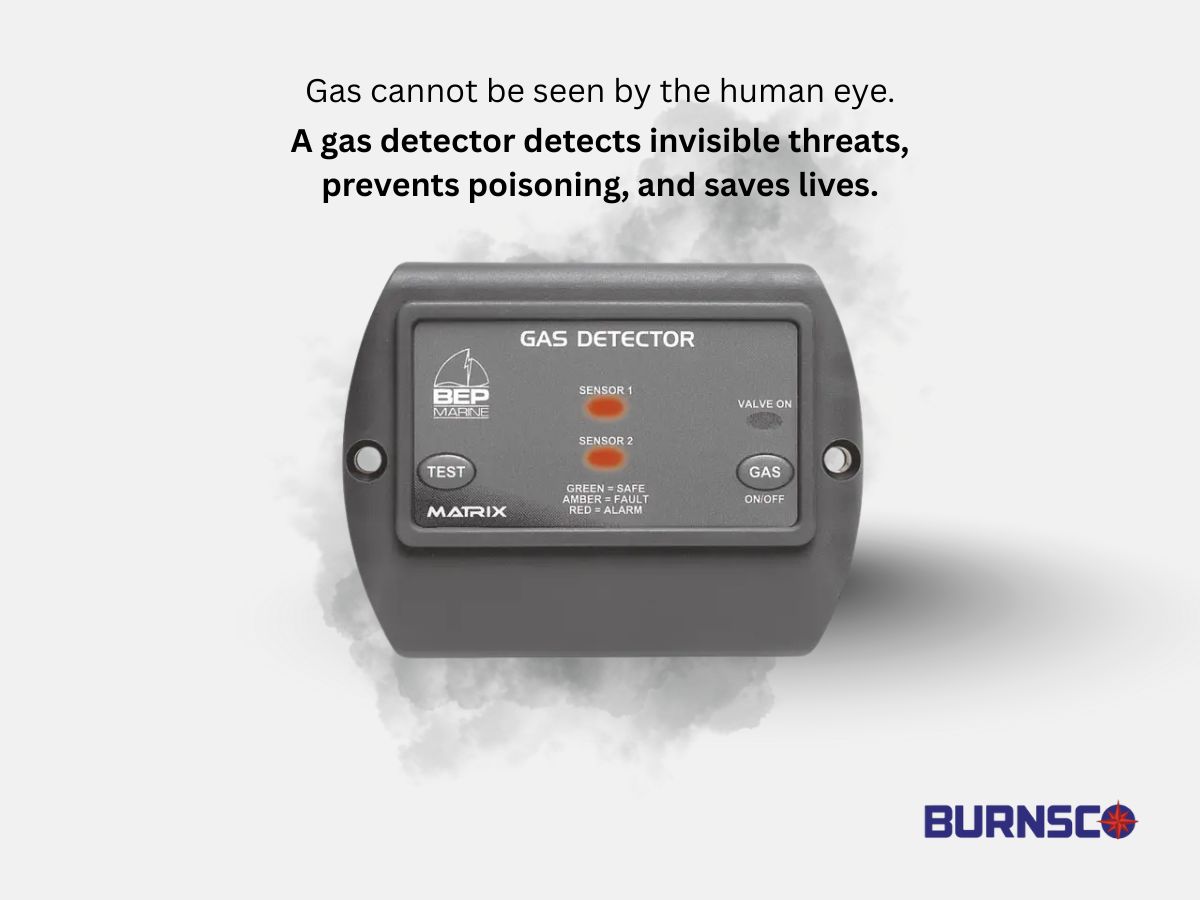
Certified marine-rated models like the BEP FD-2 or GasCUBE are strongly recommended.
CHECK OUT BURNSCO’S RANGE OF GAS ALARMS.
Worthwhile safety upgrades
Some safety gear is so simple and effective, it’s worth having even if it’s not yet a requirement.
LED flares
Take LED flares, for example. These battery-powered distress lights can flash an SOS signal for up to 60 hours – far longer than any pyrotechnic flare – and because they don’t contain explosives, they’re far safer to store onboard. While they’re not currently approved as a full replacement under New Zealand maritime regulations, they make an excellent backup or addition to your kit, especially when paired with a high-vis distress flag for daytime use. Just remember to check the batteries each season.
AIS Man Over Board (MOB) beacons
AIS MOB beacons are another smart upgrade, particularly for solo sailors or offshore crews. These compact devices clip to your lifejacket or harness and automatically activate if you fall overboard. Once triggered, they transmit your exact GPS position via AIS directly to nearby vessels’ chartplotters – giving your crew and other boats in the area a live track to follow. Unlike an EPIRB, which sends your signal into space for a coordinated rescue, an AIS MOB alert reaches the people already close enough to help, immediately.
VHF radio with Digital Selective Calling (DSC)
If you haven’t already installed a VHF radio with DSC, now’s the time to consider it. With a single push of a button, it sends out a digital Mayday that includes your GPS coordinates, alerting Coastguard and any other DSC-equipped vessels nearby. It’s incredibly fast and reliable – but only if your radio is connected to your GPS and properly registered with an MMSI number.
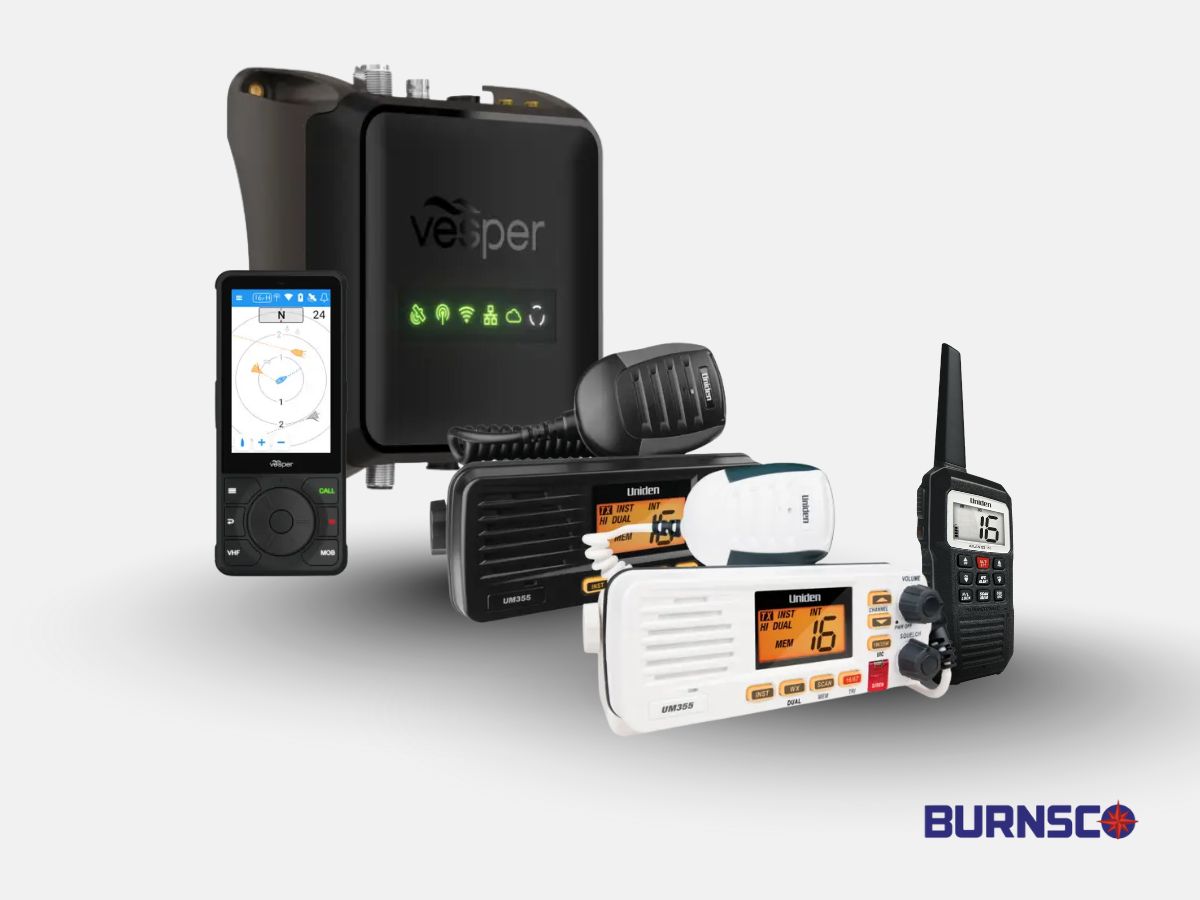
CHECK OUT BURNSCO’S RANGE OF VHF RADIOS.
Waterproof torch and whistle
And finally, don’t overlook the basics. A waterproof torch and a whistle might seem old-school, but they’re incredibly effective when visibility drops or things go quiet. A whistle will cut through wind, waves, and panic far more clearly than your voice, and a torch helps rescuers find you in the dark. You can mount both directly onto your lifejacket, or keep spares in your grab bag.
These upgrades don’t just check a box—they add real resilience to your safety plan.
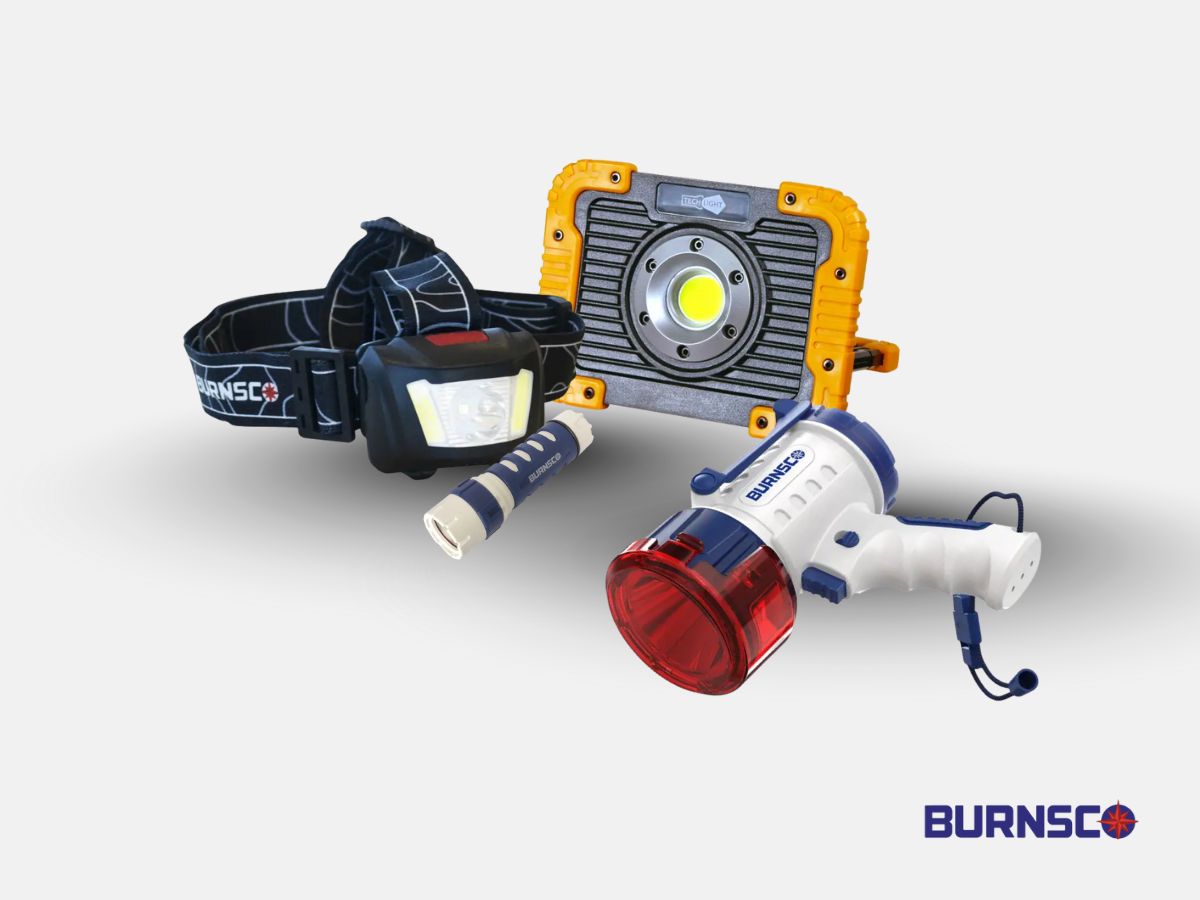
CHECK OUT BURNSCO’S RANGE OF TORCHES.
Build your safety grab bag
Every boat should have a grab bag – and everyone onboard should know exactly where to find it. Ideally, it should live somewhere obvious and easy to reach, like beside the companionway or close to the main exit. When time is tight and stress is high, you don’t want to be digging through lockers or shifting gear just to reach your emergency essentials.
The bag itself needs to be up to the task. Choose one that’s highly visible, waterproof, and able to float if it ends up in the water. A strap or tether is a smart addition too, letting you clip it securely or carry it hands-free in a rush.
What you pack inside depends a bit on the kind of boating you do, but the goal is to cover the basics and keep you going in an emergency. At a minimum, include a registered EPIRB or PLB, a handheld VHF radio, and your choice of flares or an LED distress light. Add in a first aid kit, an emergency blanket, and enough food and drinking water to get you through a long wait. Navigation gear like a compass, handheld GPS, and local charts can also make a real difference if electronics fail. A good torch, a whistle, a mirror for signalling, and even a few cyalume sticks or dye markers all increase your chances of being seen and found.
It’s also worth throwing in a few personal items – prescription medication, spare glasses if you need them, a bit of cash, and any ID or travel documents you might need in case you’re picked up far from home.
And don’t just pack it and forget it. At least once a season, pull your grab bag out, check every item, and make sure everything’s in working order. The gear you hope you never need should always be the gear you can count on.
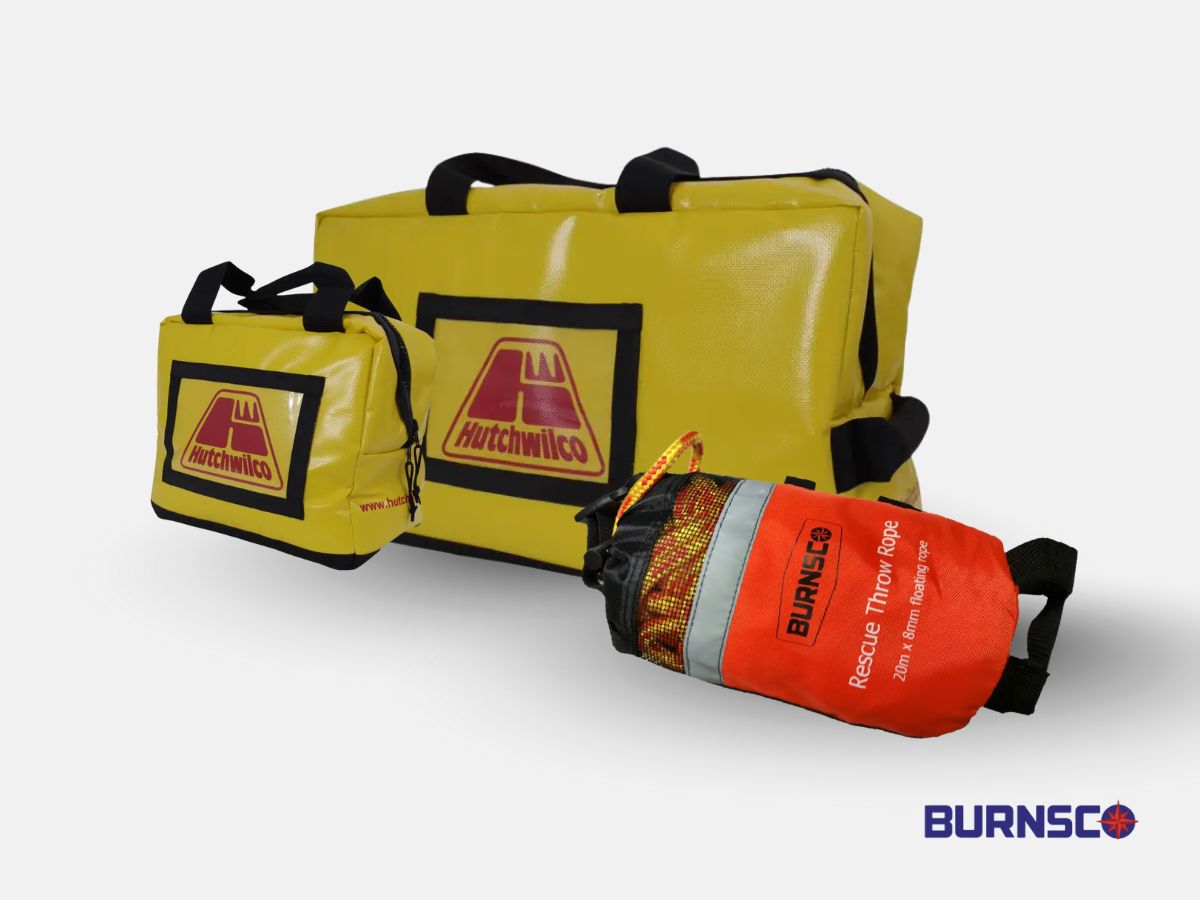
CHECK OUT BURNSCO’S RANGE OF GRAB BAGS.
Final word – don’t just check the box
Boat safety isn’t about passing a compliance check – it’s about stacking the odds in your favour when something goes seriously wrong.
So this season, do the job properly. Open lockers, run tests, check expiry dates, and replace anything you wouldn’t stake your life on. Brief your crew. Run drills. It’s not overkill – it’s seamanship.
“If you can’t trust it with your life – replace it.” – Maritime NZ
Helpful links
- Maritime NZ: Safety Equipment Advice
- Dispose of Expired Flares (NZ Police)
- Register Your Beacon with RCCNZ









